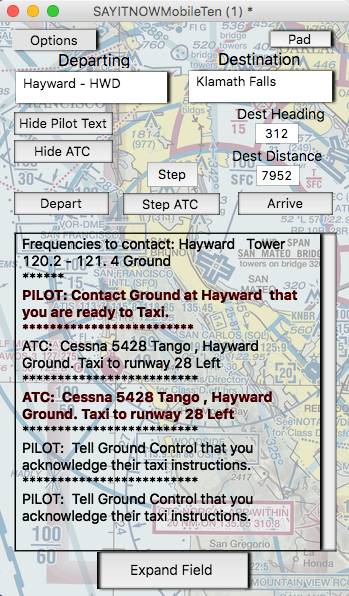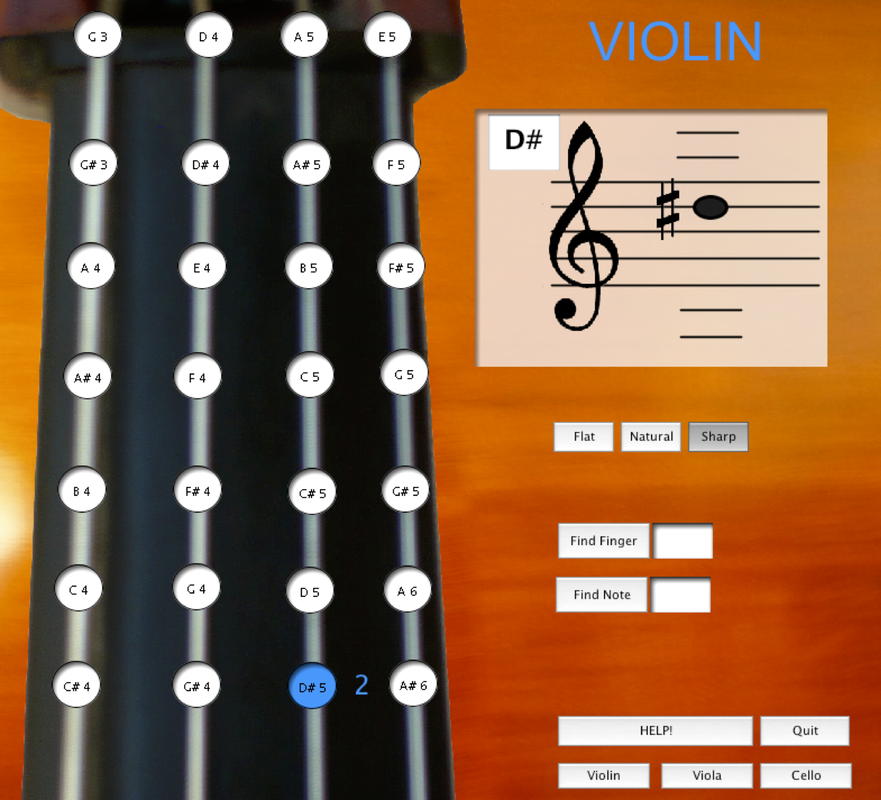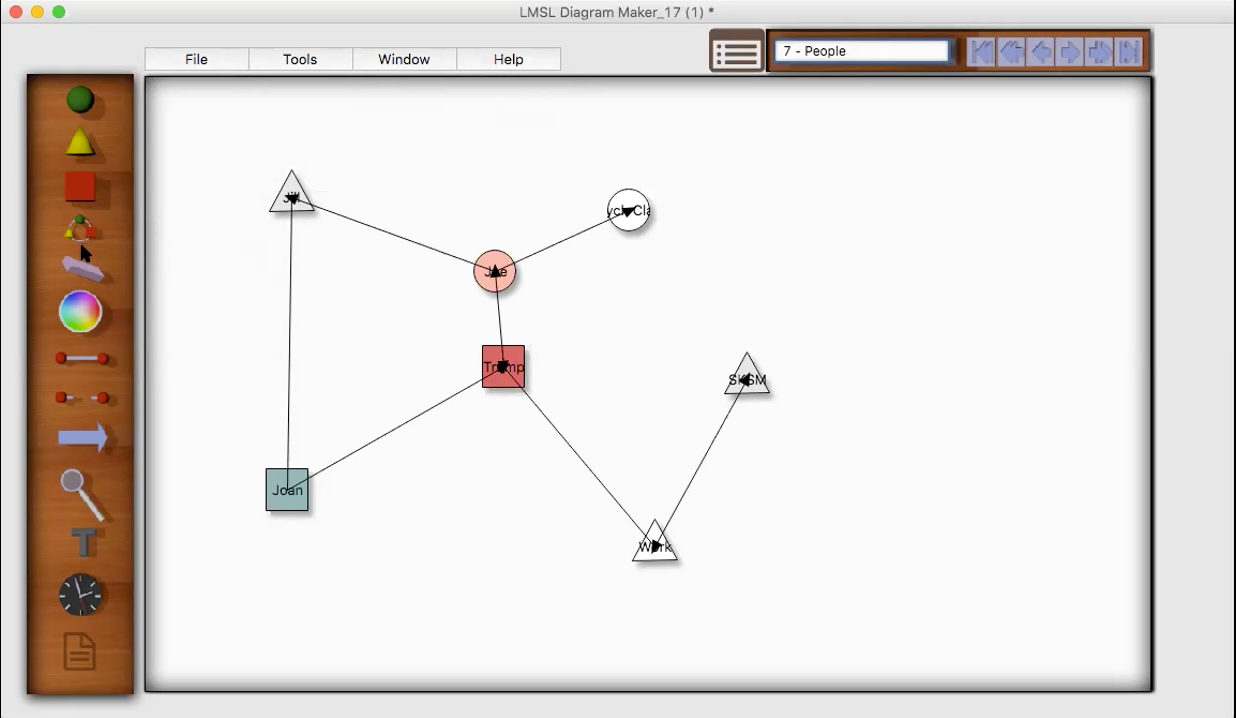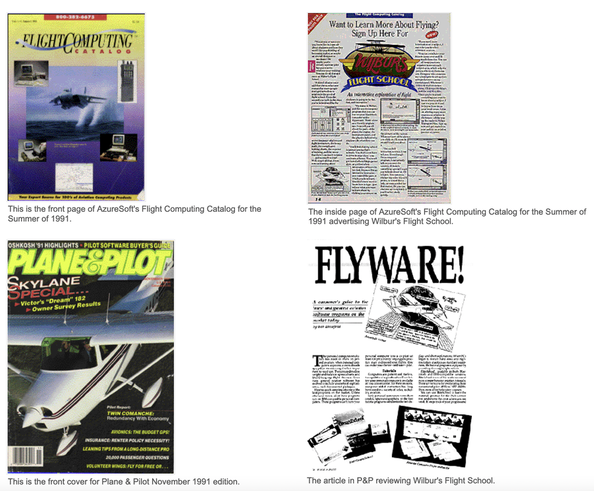Justice through Creativity...
Technology in the Service of Humanity
Lewis is a "Technologist" in a broad sense of the term. A Technologist is defined as one who "determines what can be improved in their industry and how to incorporate new technology, finds new ways to resolve problems, and further develops various processes." Starting with his appointment at the University of California, Santa Barbara as its first professor of Computer Music, Clovice has been making waves as a technology inventor and innovator. A website that chronicles his career in technology is found at www.tmeconsult.com.
Clovice's important technology contributions include:
Clovice's important technology contributions include:
|
Say It Now General aviation pilots have many things to do in a cockpit. One of the most crucial aspects of a flight in the modern era is the ability to use the radios safely and efficiently. Using proper radio phraseology and procedures is required when flying within a controlled airspace system. According to the FAA, "The single, most important thought in pilot‐controller communications is understanding. It is essential, therefore, that pilots acknowledge each radio communication with ATC by using the appropriate aircraft call sign. Brevity is important, and contacts should be kept as brief as possible, but controllers must know what you want to do before they can properly carry out their control duties. And you, the pilot, must know exactly what the controller wants you to do. Since concise phraseology may not always be adequate, use whatever words are necessary to get your message across. Pilots are to maintain vigilance in monitoring air traffic control radio communications frequencies for potential traffic conflicts with their aircraft especially when operating on an active runway and/or when conducting a final approach to landing." The need for "brevity" can trip many pilots, especially if they do not often fly in controlled airspace. "Say It Now" is an application for smart phones that knows where an aircraft is located in relation to air traffic control areas and allows them to read exactly what they need to say to communicate on the radio. Clovice created the "Say It Now" app because he sometimes studders and has trouble speaking as quickly and succinctly as is required for radio communications. Strings Instructor
People new to stringed instruments in the violin family struggle to understand where notes are on those instruments. Clovice taught strings to 4-8th graders at a Waldorf school in Ukiah, CA for a total of four years and came to understand first-hand how difficult it is to teach strings effectively. As a result of his experiences he created an app for smart phones called "Strings Instructor".
The app showed users where notes were on all of the stringed instruments and how to read notation by a number of means: identify a notated note on the staff by its position on the fingerboard press a note position on the fingerboard and hear the note and its notation on the staff identify a note (any register) on the fingerboard only "Strings Instructor" is available upon request. Lewis McKinley Symbolic Language (LMSL)
The LMSL was invented by Clovice on March 31, 2000. It was inspired by a conversation with Roger McKinley, who was in need of a means to graphically depict abstract concepts he taught as part of his "Course in Fundamentals". A paper by Lewis describing the complete history and uses of systems created to symbolically convey information can be found here. A General Specification provides guidelines for the creation of LMSL diagrams, both without a specific computer application, as well as by means of a computer application specifically designed for such called the Presentation Engine. The LMSL allows users to describe the evolution of practically any system using simple, intuitive symbology and/or color. The evolutionary aspect of the language was largely stimulated by the "meme" concept introduced in the groundbreaking book entitled "The Selfish Gene" by Richard Dawkins, which was first published in 1976. The unpublished LMSL book is available on request. Wilbur's Flight School
Wilbur's Flight School was the world’s first truly interactive multimedia guide for aviation. Clovice realized that the then, newly introduced HyperCard by Apple Computer, Incorporated could be used to produce an interactive encyclopedia. A multimedia format can breathe life into the many pages of boring technical information pilots are required to know. He was especially keen to produce Wilbur’s Flight School because he received his Private Pilot license in 1987 and would have appreciated the product as a study guide for himself. At that time AzureSoft, a company which created its own aviation software and published a catalog called the Flight Computing Catalog, was selling sophisticated flight simulators and other avionics for the general aviation community. It took only six months for Clovice to create the software that AzureSoft marketed as Wilbur’s Flight School. Although it was originally created for Macintosh computers (in black and white), the November 1991 issue of Plane & Pilot magazine called it “one of the best programs on the market…highly interactive and features excellent graphics and audio.” Wilbur’s Flight School was a very simple, yet powerful example of effective multimedia design coupled with intelligent “hypertext” links to text. This combination created a rich environment for the study of virtually any subject. Wilbur’s Flight School also became the basis for the Computer Based Training system that the Lockheed Integrated Solutions Company fraudulently used to obtain a huge government contract. Functionally Integrated Documentation System
The Functionally Integrated Documentation System was a revolutionary way to document complex electronic systems. Clovice was hired as the Manager of Technical Publications to work at the main plant in Dietzenbach, West Germany for Dolch Logic Instruments to convert what was called “Genglish” (combination German and English) technical manuals into “Silicon Valley English” technical manuals. The first thing he did at Dolch was to introduce the Functionally Integrated Documentation System (FIDS), which he helped develop at Applied Research Labs several years prior. Click here for pdf excerpts of the FIDS Technical Manual Specification. You will see that it was the basis for all the technical publications produced by DLI for many years. |
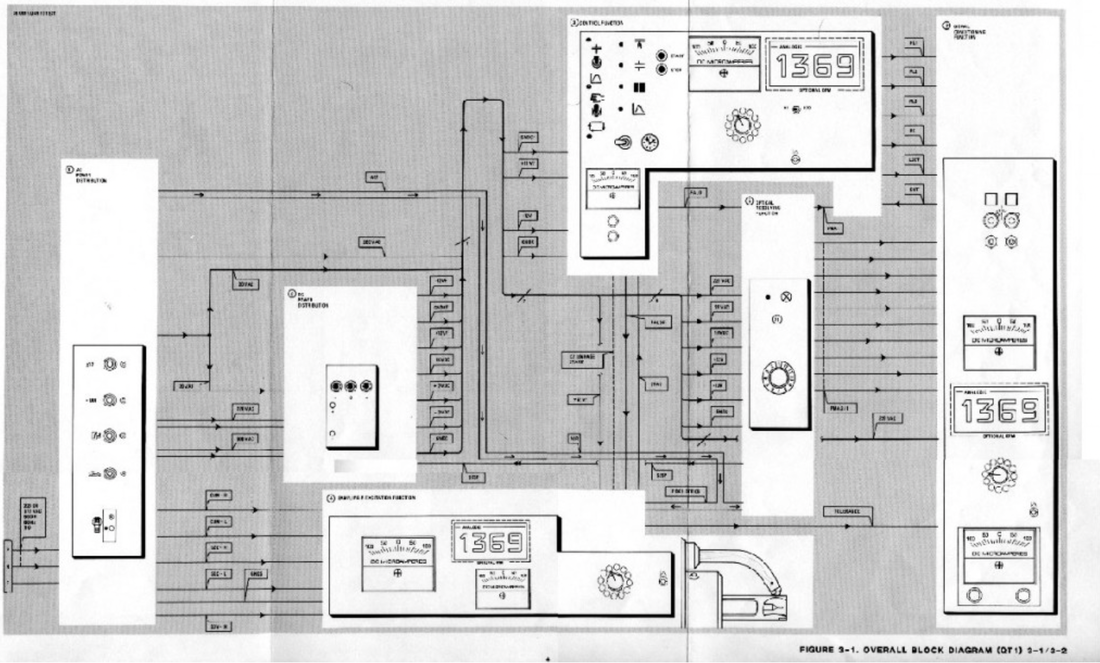
This is the Functional Block Diagram from the Operator's Manual of the Applied Research Labs 36000 Quantotest. Clovice was a member of a dedicated team of professionals that was assembled to produce these beautiful manuals. The detailed block diagrams, fault isolation charts, and troubleshooting procedures were all produced by hand, using pen and ink, and made camera-ready. FIDS manuals were as expensive as they were comprehensive in the early 1980's, before the advent of desktop publishing. Clovice adapted the FIDS concept for electronic desktop technology.
|
